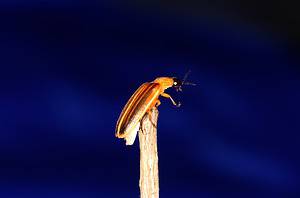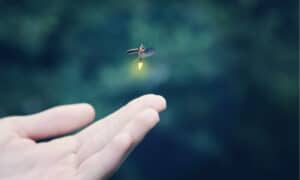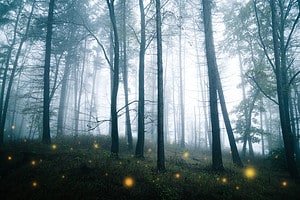Picture this: It’s a lovely night in late spring. The sun has set and the stars are emerging in the sky. You step outside and feel a gentle evening breeze. You look around and notice a growing number of glowing lights in the field in front of you. They move and flash in varied states of urgency, dancing in the air a few feet from the ground and lending a sense of wonder to the world.
Depending on where you’re from, you might have a different name for the animal that is causing this. In the United States, you likely refer to these glowing beetles as either fireflies or lightning bugs.
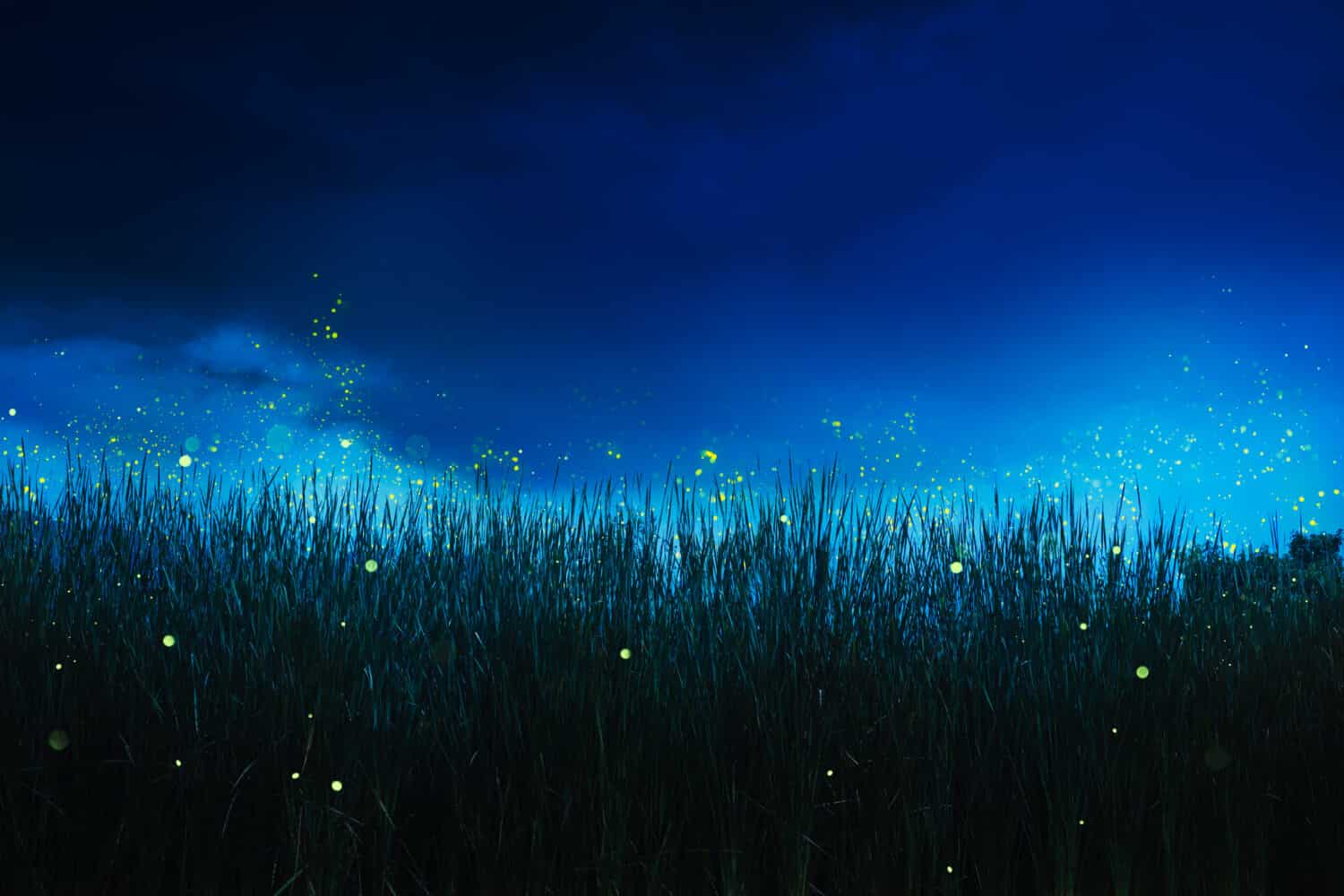
A spectacular light show over tall grasses.
©Fer Gregory/Shutterstock.com
What are Fireflies?
Soft-bodied beetles from the family Lampyridae, over 2,000 species of insects are classified as fireflies. All beetles from this family emit light at some point in their life cycle, though some lose their bioluminescence when they reach adulthood. For more information on these fascinating beetles, including lifespan, diet, and habits, check out our firefly information page.
Why They Glow
Fireflies are bioluminescent life forms that likely adopted this distinctive characteristic over 100 million years ago. There are many reasons for this evolution, but the main one is courtship. During their mating season, fireflies are especially active, and males use a pattern of flashes from their lower abdomens to attract mates. Furthermore, these flashes are a defense mechanism from predators.
The glowing, put simply, is a result of a chemical reaction. Fireflies regulate oxygen in their abdomens, which activates a compound called luciferin. This airflow, combined with an organic compound called ATP – a form of organic energy – oxidizes the luciferin to create a new chemical compound. This new compound is the source of the beetle’s signature glow.
Where They Live
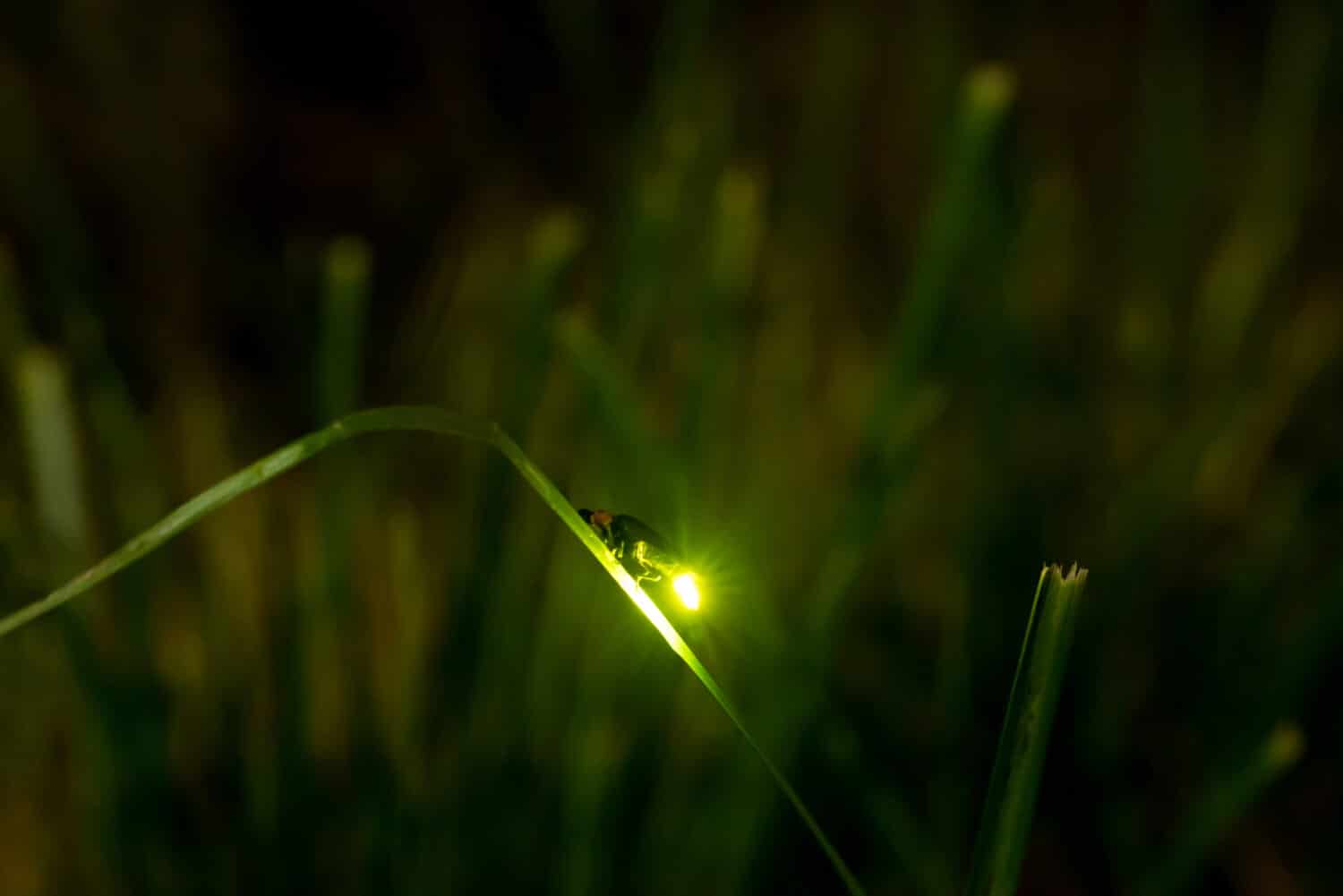
A cylindrical body is a common feature in most species of fireflies.
©anko70/Shutterstock.com
Fireflies live on every continent in the world except for Antarctica. Over 150 different species inhabit the United States alone, while some countries boast even more varied species. India, for example, is home to almost every species of firefly. Most fireflies in the United States live on the eastern side of the country, but our research finds no reason why this is true. It is rare to find populations of fireflies further west than Kansas.
As far as their environment goes, fireflies require warmth and moisture in order to survive. Most populations live near bodies of water, such as ponds, marshes, lakes, and streams. Grasslands, forests, fields, and meadows are all common habitats for these beetles, and they thrive in grass-rich areas that border water sources.
Common Names
A creature as mystical as a firefly is prone to collecting a variety of names. Here’s a helpful list of just a few of their many titles around the world.
- Firefly
- Lightning bug
- Glow fly
- Peenie Wallie (Jamaica)
- Blinkie (Jamaica)
- Luciole (France)
- Kelip-Kelip (Malaysia)
- Moon bug
- Pirilampos (Portugal)
- Hotaru (Japan)
- Fire devil
When do Fireflies (Lightning Bugs) Come Out?
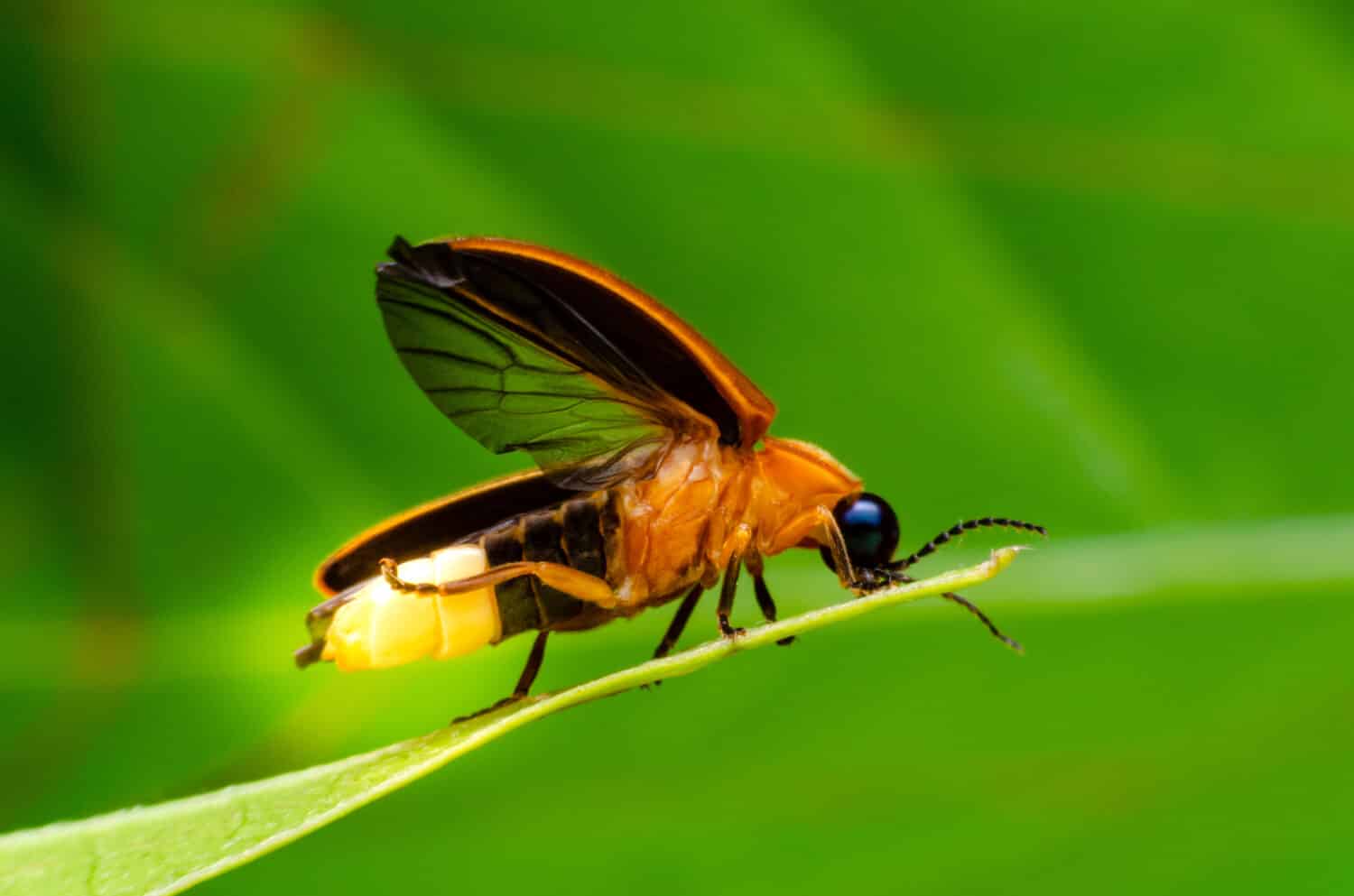
Varied glow: different species of fireflies give off different colors of light, including yellow, green, and orange.
©khlungcenter/Shutterstock.com
Fireflies emerge at the end of spring, as the heat of summer calls millions of bugs species out of hiding to eat, meet, and reproduce. In the United States, late May is the beginning of their summer cycle, and it runs as late as August. The best month to see fireflies is June, at the peak of their breeding season.
Lightning bugs are nocturnal, so the best time to see them is on a warm summer night. It is not uncommon to see a few of them out during the day, especially in the hours before sunset, but the best firefly shows occur in the hours after dusk and before dawn.
Conservation Status
Fireflies, as a whole, do not currently qualify for the list of federally protected or endangered species in the United States, but some states have taken steps to protect them. Three states honor the firefly as one of their state insects – Tennessee, Pennsylvania, and South Dakota. In Pennsylvania, the Department of Conservation and Natural Resources is taking steps to preserve their natural habitats and encourage population growth, including the reduction of light pollution.
Unfortunately, some species of fireflies run a higher risk of disappearing. Researchers from several organizations teamed up with the International Union for Conservation of Nature to evaluate the risk of extinction across over 170 species of fireflies. Their findings are disheartening. 18 species of fireflies now face the threat of extinction, with one – the Bethany Beach firefly – qualifying as critically endangered in 2019. This research also estimates that over 14 percent of the species present in the United States and Canada qualify as endangered or vulnerable. Insufficient data for a large portion of the species leaves much unknown. It is likely that many more firefly species than we know face endangerment or extinction.
Growing levels of habitat loss and light pollution continue to threaten fireflies, and we will see an increase in threatened species if we do not take action.
How You Can Help
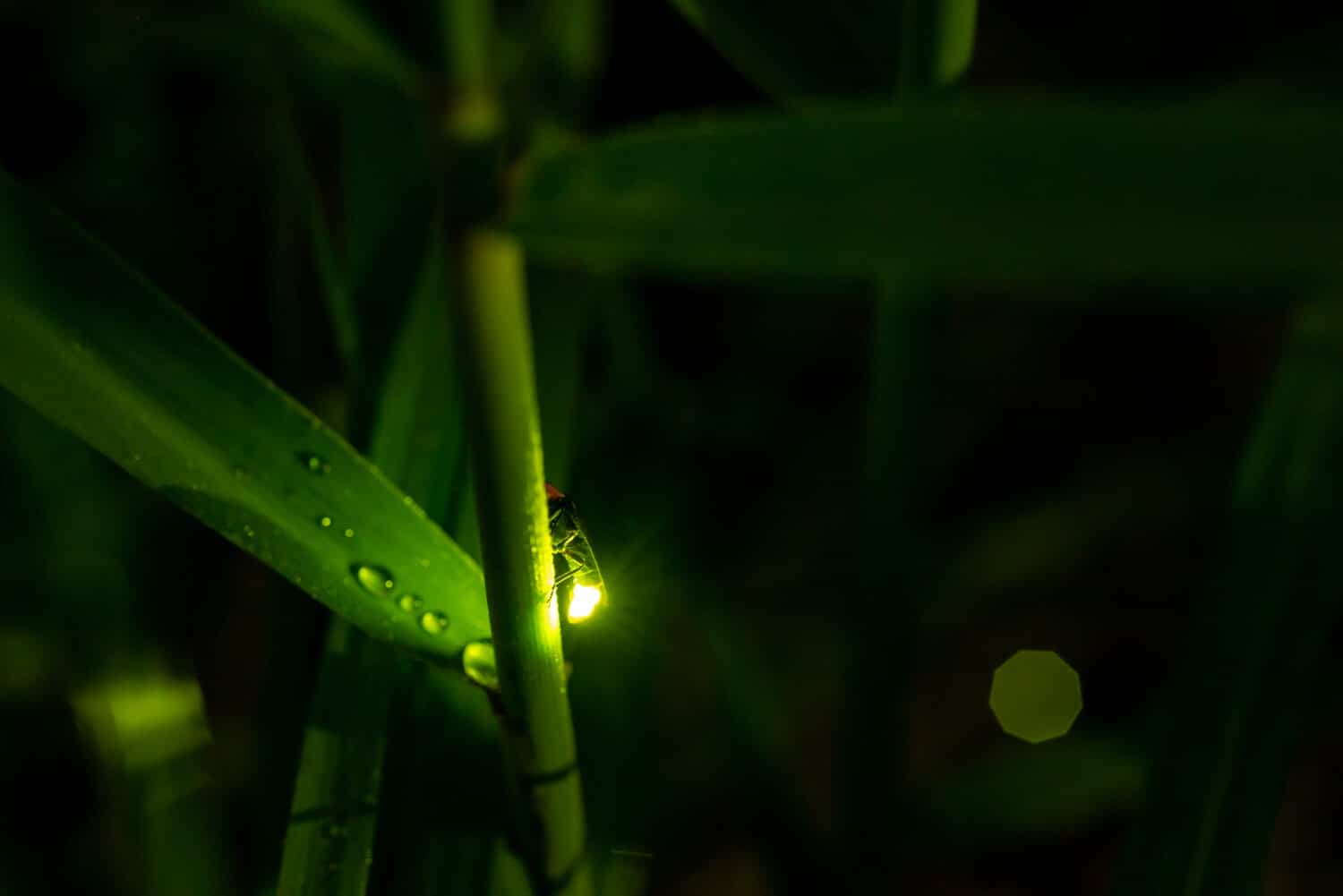
Even the firefly eggs are luminescent!
©anko70/Shutterstock.com
There are a number of ways individuals can work to protect the early summer wonder of a firefly population. Firefly Conservation & Research, a nonprofit founded by Ben Pfeiffer, offers a number of tips on how you can help your local lightning bugs. We’ll include some of those suggestions here, along with a couple of other tips.
- Do not capture fireflies for long periods of time and do not kill them. You can learn how to carefully catch these magical bugs and keep them for a short time, but be sure to release them quickly.
- Reduce your use of light. Turning off outdoor lights helps fireflies maintain a dark environment where they can successfully communicate. This is imperative for their breeding and safety.
- Build a firefly habitat! There are several guides available for building these habitats, but a good tip is to make sure to add a water feature.
- Talk to your local or state wildlife agencies about what you can do to help in your area.
- Talk to your family, friends, and neighbors about the growing risk to firefly populations. Sharing information and education is a front-line defense against animal extinction. The more your community knows, the more likely it is to be capable of taking action.
- Check out and contribute to Firefly Watch, a community science project that helps researchers and scientists track the geographic distribution of firefly populations. Contributing is easy and you can do it in many ways, including posting firefly sightings, donating to research, or attending online and in-person events centered around the protection of the species.
- Avoid using pesticides and other chemical treatments on your lawn, garden, and fields. A natural environment free of toxins is necessary for all life to thrive.
- Take your friends to see a firefly show! People care more about things they can interact with, and showing the people in your life the wonder of a mid-June natural light show might do just that. Make sure to teach them how to interact with fireflies and their habitats respectfully before you go.
Other Bugs That Glow
Fireflies are not the only species of insect that emits light. Bioluminescence is apparent in several insect species around the world, along with other life forms that light up our world. We’ve included a short list of just some of the other glowing insects that inhabit our planet.
- Glow worms (Arachnocampa luminosa)
- Motyxia – a genus of luminescent millipedes
- Railroad worms (Phrixothrix)
- Click beetles (Pyrophorus)
- Glowing cockroaches (Lucihormetica lucka)
The photo featured at the top of this post is © Fer Gregory/Shutterstock.com
Thank you for reading! Have some feedback for us? Contact the AZ Animals editorial team.




